 Technology peripherals
Technology peripherals
 AI
AI
 Use ChatGPT to build large models in seconds! OpenAI's new plug-in is crazy, connect to the code interpreter and get it with one click
Use ChatGPT to build large models in seconds! OpenAI's new plug-in is crazy, connect to the code interpreter and get it with one click
Use ChatGPT to build large models in seconds! OpenAI's new plug-in is crazy, connect to the code interpreter and get it with one click
After ChatGPT can be connected to the Internet, OpenAI also quickly introduced a code generator. With the support of this plug-in, ChatGPT can even generate its own machine learning model.
Last Friday, OpenAI just announced the shocking news that ChatGPT can be connected to the Internet and connected to third-party plug-ins!
In addition to third-party plug-ins, OpenAI also introduced its own plug-in "Code Interpreter" and gave several special use cases: solving quantitative and qualitative mathematical problems; performing data analysis and visualization ;Quickly convert file formats.
In addition, Greg Brockman demonstrated that ChatGPT can also process uploaded video files.

And a best-selling author named Andrew Mayne, OpenAI's creative application and science communicator, immediately gave it a try - using the Code Inerpreter ) access ChatGPT.

The feeling is that it is so silky!
When I used ChatGPT to write code, I always needed to take the code out and put it in another environment for testing.
Now, you can develop directly in ChatGPT without leaving the current interface.
As long as we add this code interpreter to the data analysis and drawing functions, an incredibly powerful coding and research tool will be born.
OpenAI’s new plug-in system: code interpreter
Currently, the code interpreter can only run Python on a small number of libraries, and even with the most basic libraries, it There are so many things you can do and it’s very interesting.
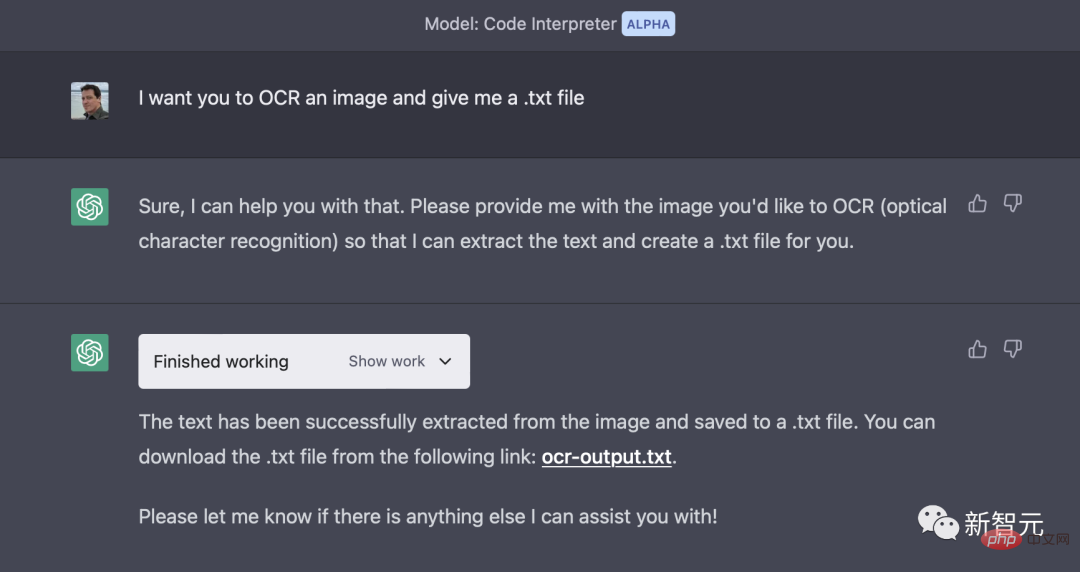
Additionally, in addition to generating code, the Code Interpreter (CI) can analyze the output and use it in another function.
Therefore, we can string different codes together, get the output of one, and then provide it to the other.
This is how this Pac-Man gif is generated: CI uses an algorithm to generate a maze, turns the maze into blocks, uses an algorithm to find the exit, makes it look like Pac-Man, and then generates a gif.
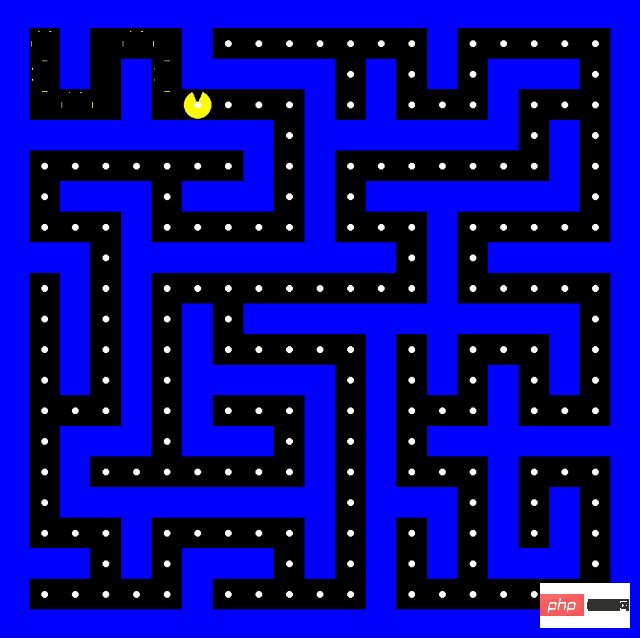
The following are some examples of Mayne using ChatGPT’s code interpreter plugin to conduct random experiments.
Create a machine learning model (sort of)
Although currently ChatGPT cannot load any machine learning libraries into the code interpreter, we can use n-grams to do some basic statistics Text generation.
In the following example, by providing it with a book, it is asked to create a prediction algorithm and then predict the next word in the text sequence.
GPT uses an n-gram model to generate the algorithm:
Next word prediction is a natural language processing task that can be solved using a language model. A simple way to build a language model is to use an n-gram model.
The n-gram model is a statistics-based language model that predicts the next word based on the previous n-1 words. For example, if we choose n=3 (i.e. ternary model), the model will predict the next word based on the previous two words.
Here is some code to help you build a ternary model from scratch.
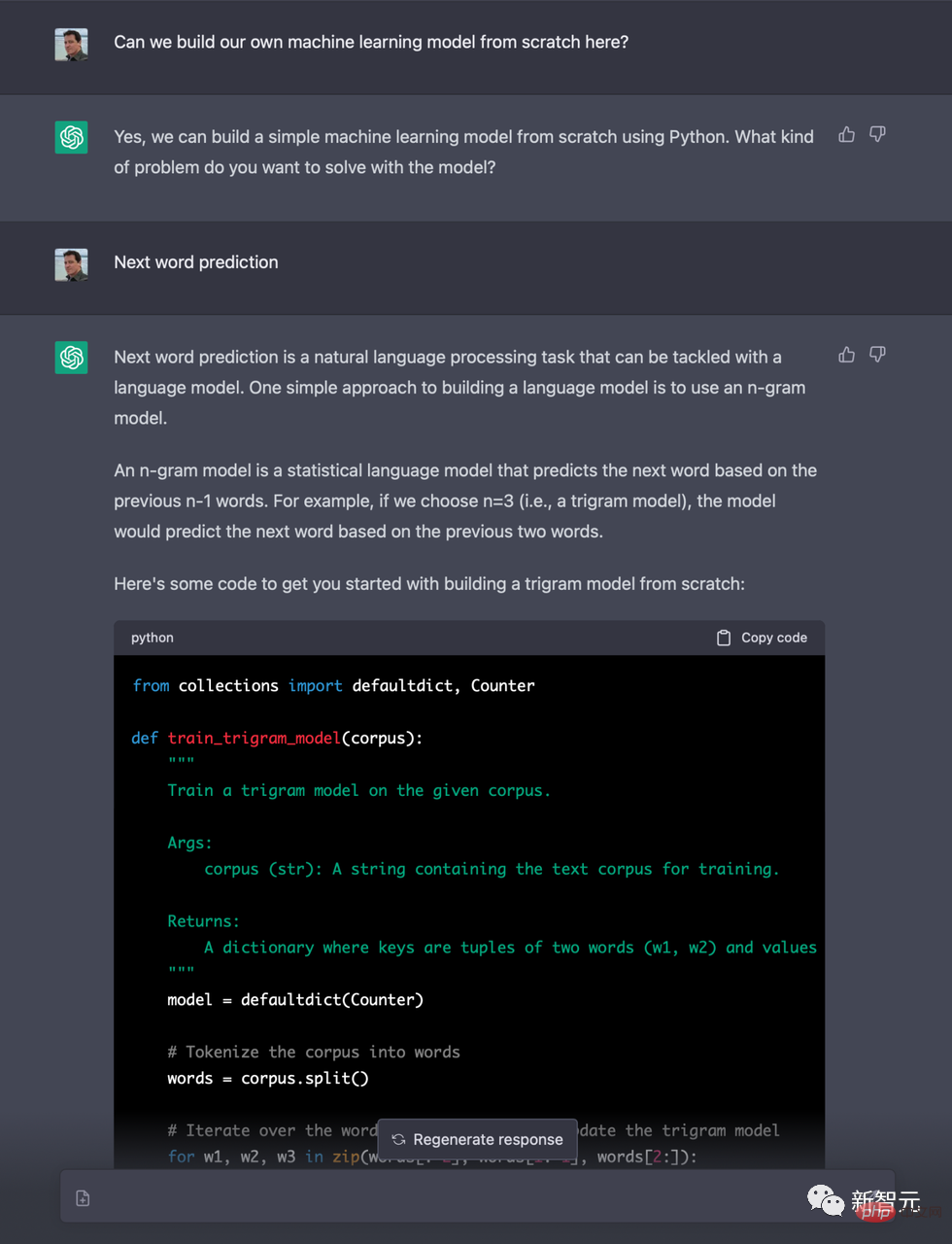

Voice
Because ChatGPT can understand a lot of mathematical data and CI can generate downloadable files, Mayne Tried using ChatGPT to generate Shepard tones. This is a unique tone that creates the illusion that the pitch is getting higher.
ChatGPT not only successfully completed the task, but also directly generated a wav file using CI.
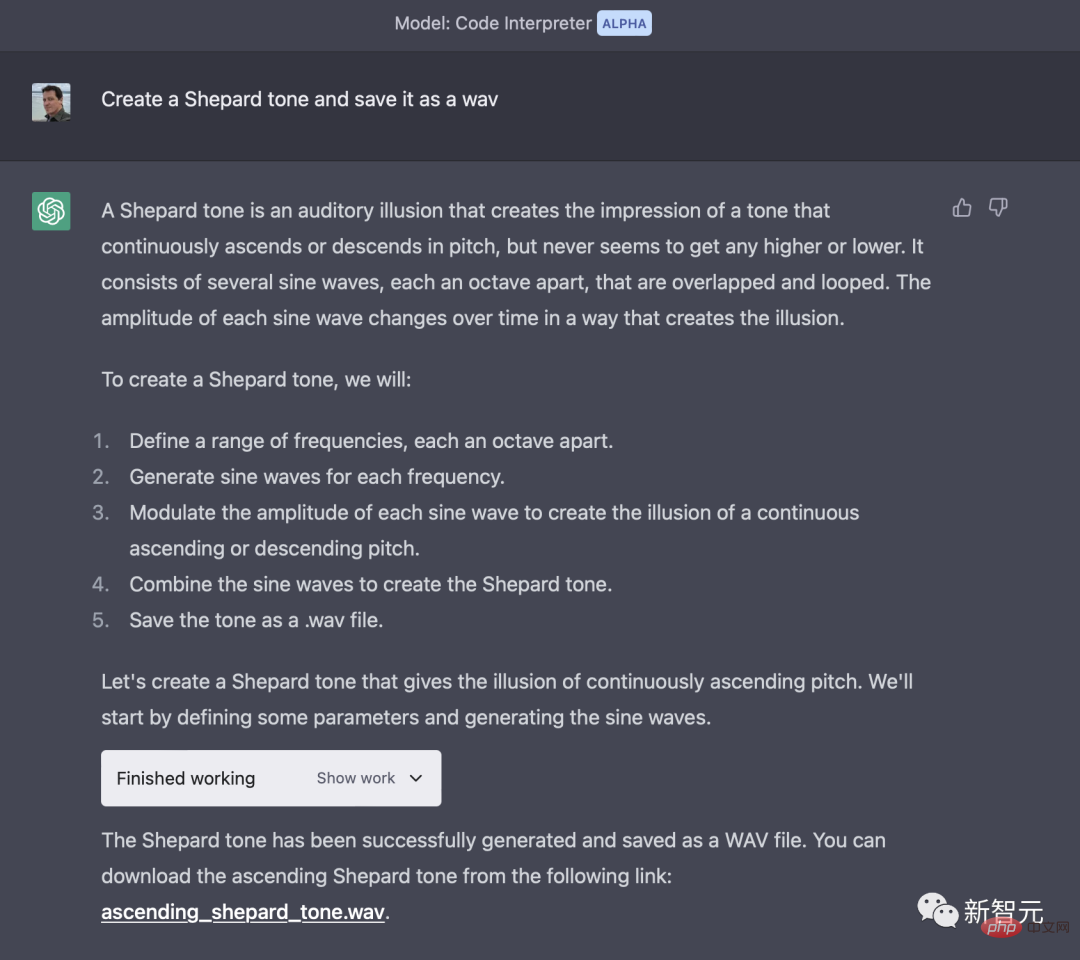
Open it and listen to the Sheperd sound, and the feeling is, two words - perfect!
Since the Sheperd tone generated by ChatGPT was so perfect, Mayne went a step further and asked ChatGPT to generate a session of Conway's Game of Life and then convert it to music.
(Conway's Game of Life is a computer program designed by Conway of the University of Cambridge. It is a Turing-complete zero-player game, meaning that its evolution depends on its initial state and requires no further input .)
In the first pass, the music generated by ChatGPT was a bit too casual. Mayne asked it to generate more pleasant music, so ChatGPT applied the pentatonic scale, which sounded really good.
game_of_life_pentatonic_slowAudio: 00:0000:14
ChatGPT’s performance was so good that Mayne was so excited that he had begun to envision an entire mathematical music album , such as (Fibonacci sequence, Mandelbrot set, cellular automata).
He then asked ChatGPT to generate an album cover for the song "Conway Game of Life". Since it was not connected to the DALL-E, Mayne asked it to generate images from simulated frames.
The album cover is as follows.

QR code
Looking at this album cover, Mayne immediately realized that it might be possible to use ChatGPT to generate a valid QR code.
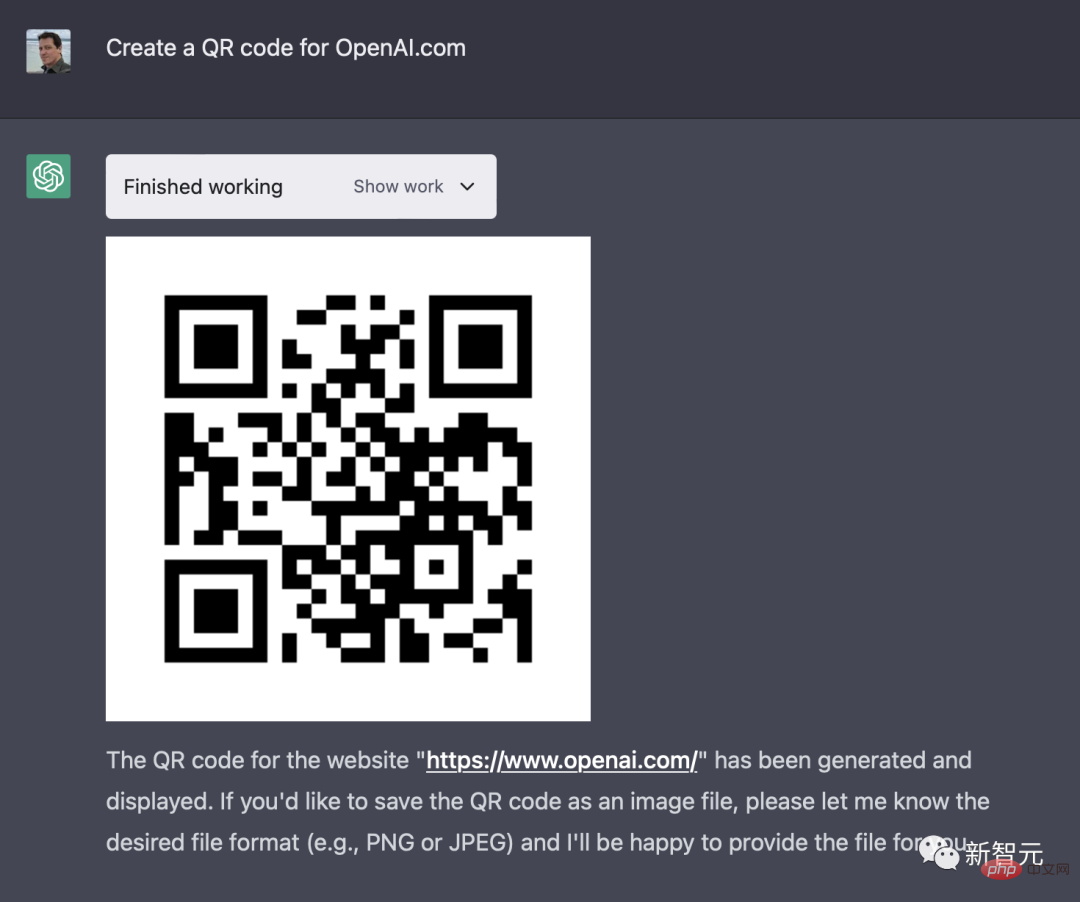

Mayne asked it to generate a QR code for OpenAI’s website, and the result is as follows:
So, can ChatGPT create a Conway Game of Life that ends with a QR code?
Yes, it can.

Picture
In addition, Mayen found that using OpenCV and a simple facial recognition algorithm (Haar Cascade classifier), CI You can create a function to perform face recognition.
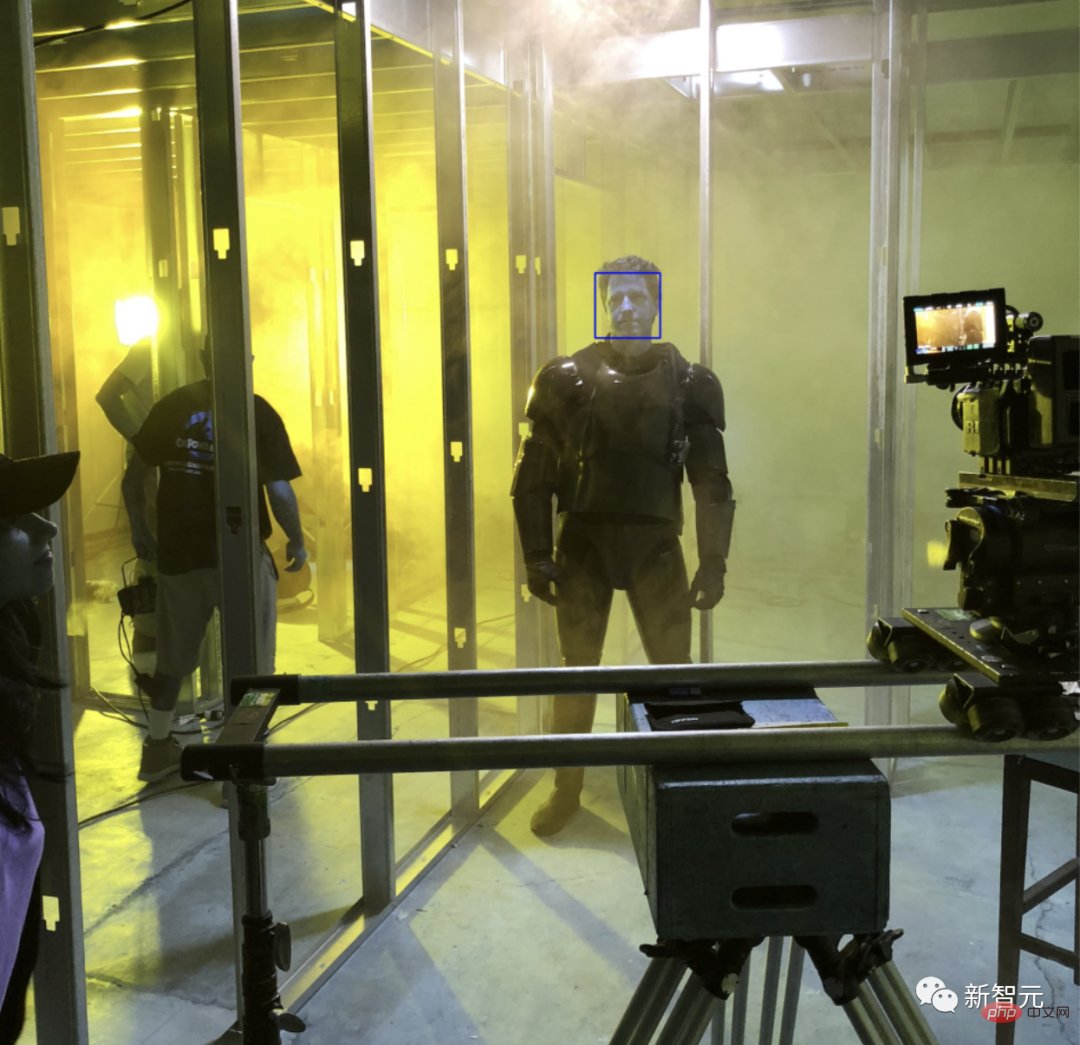
Using OpenCV for face recognition
Now, ChatGPT can open and read files by itself, which means that in theory it can use this data Generate something new. For example, convert a picture to ASCII form.
Upload pictures:

Convert to ASCII:

Generate animation
Through the code interpreter, data can be generated and output into different formats including gif.
First, make it a bouncing block:

Then the blizzard:

Continue Next is the "Game of Life", which inspired the QR code simulation experiment.

#Trying to get the code interpreter to use a vectorized cube to generate a "rotated cube". Before trying other methods, this was the closest I could get:
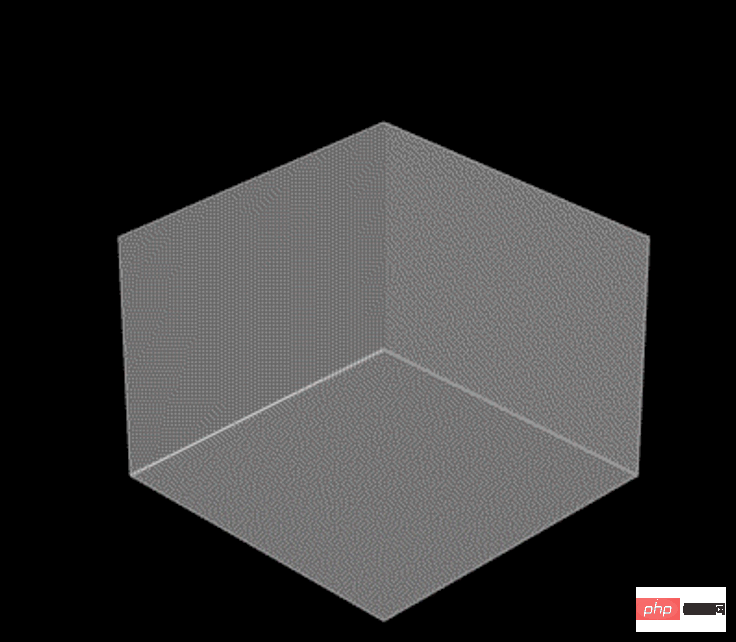
OCR
Optical Character Recognition (OCR) is Code Interpretation, Study Says A library in the server. By testing with a screenshot of the website, it can indeed be identified.
Combining OCR with GPT-4, a powerful language model, offers some interesting possibilities for repairing old documents.
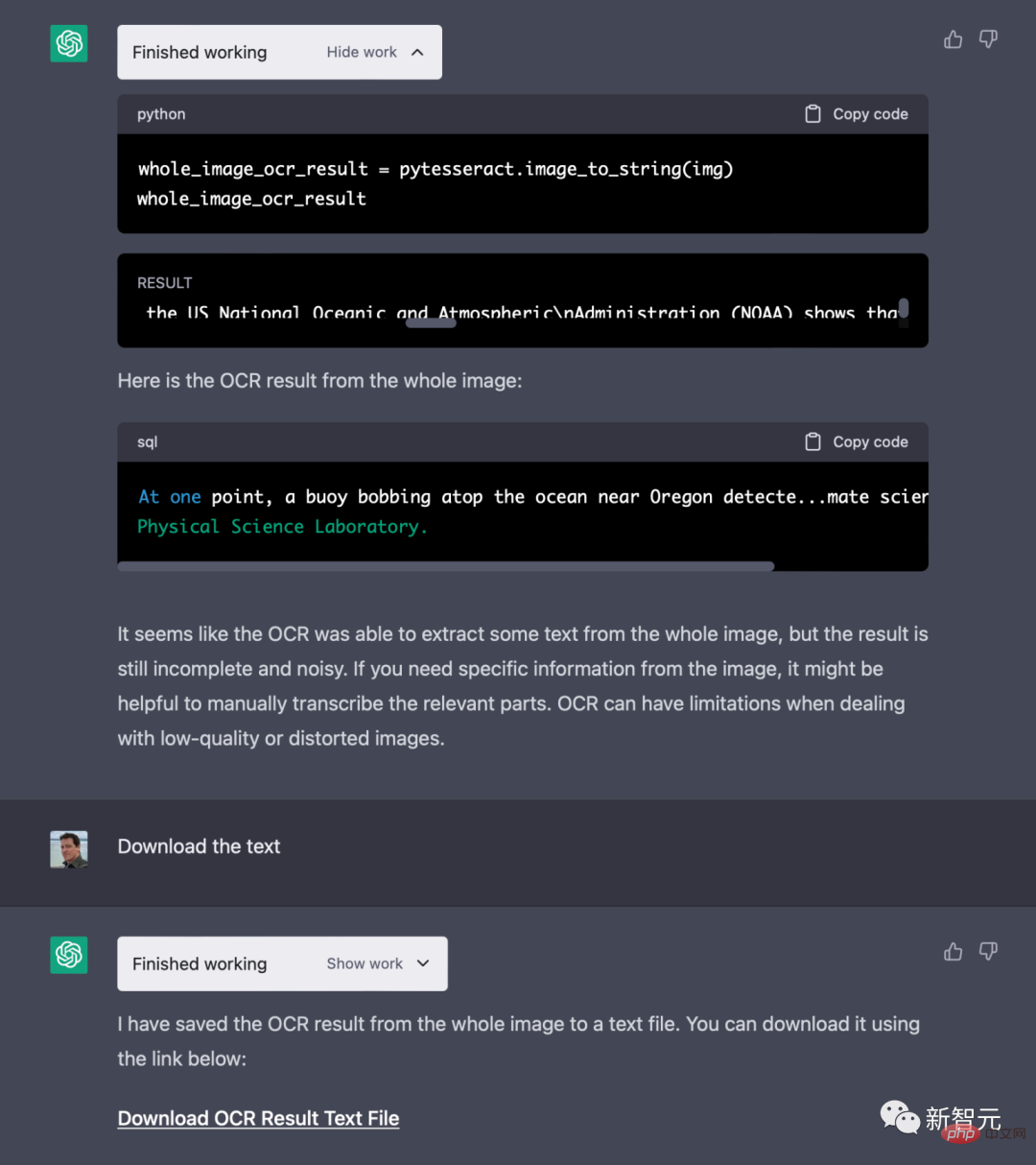
As can be seen from the above figure, OCR can extract part of the text from the entire image, but the result is still incomplete and contains noise.
It seems that OCR may have limitations when dealing with low-quality or distorted images. If you need to get specific information from an image, you'll also need to manually transcribe part of the content.

Calendar invitation
Although the code interpreter does not have access to the ics library, it can generate a plain text calendar invitation and then let ChatGPT saves it as an .ics file.

draw
Although there have been some interesting examples of GPT-4 generating scalable vector images (SVG). But I'm still curious about what ChatGPT and the code interpreter can do with simple image blocks.
I asked it to draw a cat and it created something resembling a cat. To make sure it wasn't made from memory, I asked it to draw a blue top hat and pipe. Not quite the top hat I imagined, but still a hat, and blue.

A cat wearing a hat and smoking a pipe:

A cat wearing a hat and smoking a pipe Cat" style hat, and a cat smoking a pipe:
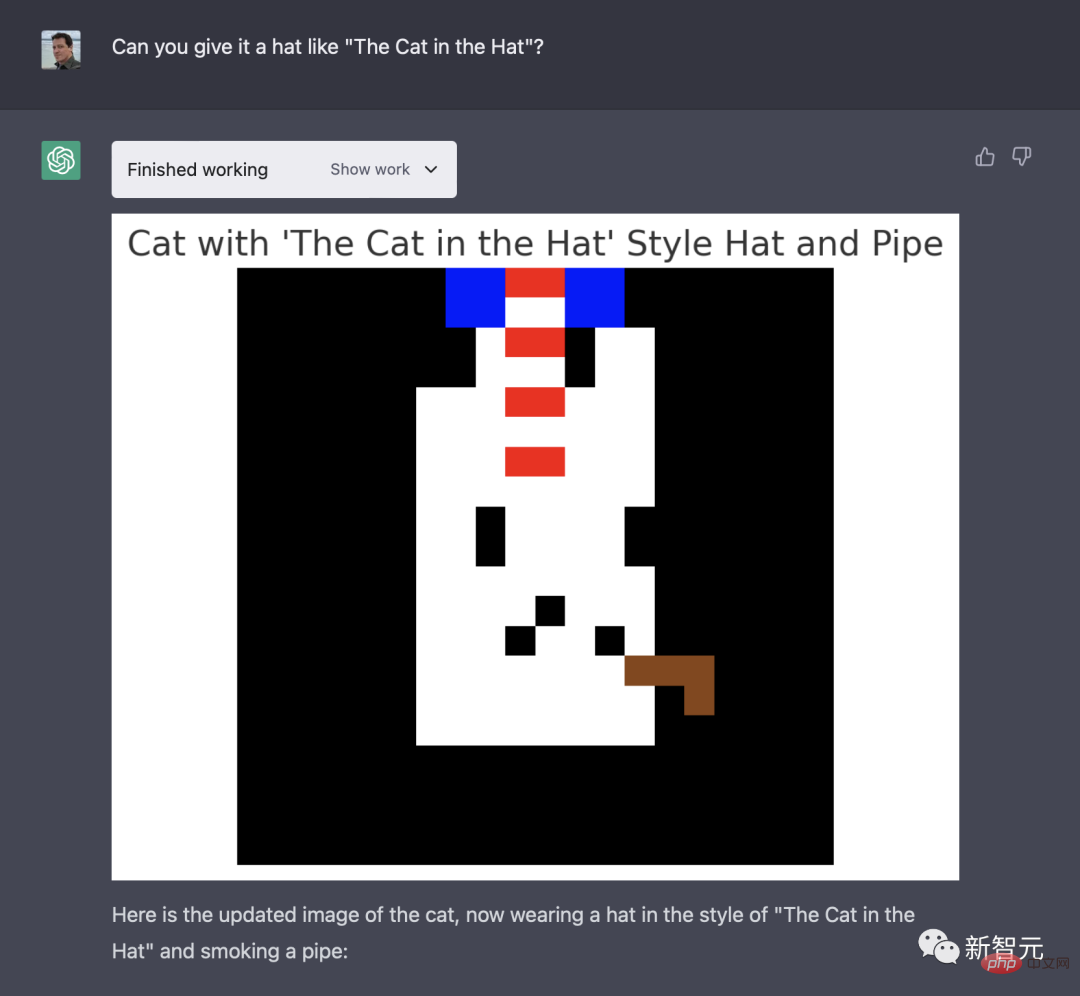
Simulator
I successfully got ChatGPT to generate inner planets using the Matplotlib library Simulation of the track and save it as a gif.
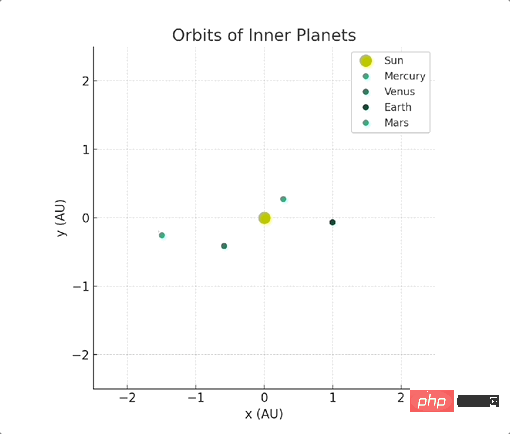
I then thought about whether I could have ChatGPT simulate a game of checkers, and managed to move the pieces, but not take away the opponent's pieces out of politeness.
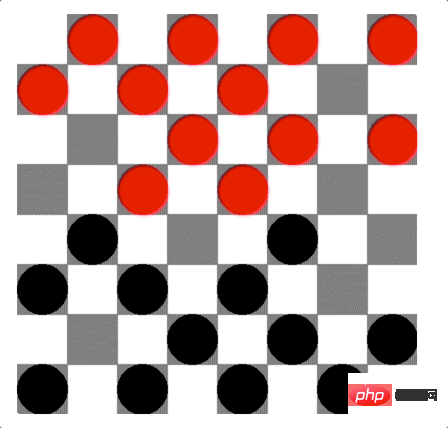
Can you simulate a game of chess? First I asked ChatGPT to create its own board library (a very simple board library with some restrictions and less legal moves...) and then use Unicode to represent the pieces, after which it could simulate the start of a game and convert it Save as .gif file.

The following is the conversation between me and ChatGPT during the chess simulation. As you can see, I just gave some instructions and ChatGPT and the code interpreter did the rest.

The above are some explorations of ChatGPT and code interpreter plug-ins by Andrew Mayne.
Netizens commented after reading that LLMs are becoming more and more like real programmers. They can not only suggest code snippets, but also write entire blocks of code, run the code, and output further guidance and feedback to you.

Some people said that even if they stop what they are doing, they should read this article about the use cases of the GPT-4 code interpreter plug-in. This is completely crazy and will change everything.

Reference:
https://andrewmayneblog.wordpress.com/2023/03/23/chatgpt-code-interpreter-magic/
##
The above is the detailed content of Use ChatGPT to build large models in seconds! OpenAI's new plug-in is crazy, connect to the code interpreter and get it with one click. For more information, please follow other related articles on the PHP Chinese website!

Hot AI Tools

Undresser.AI Undress
AI-powered app for creating realistic nude photos

AI Clothes Remover
Online AI tool for removing clothes from photos.

Undress AI Tool
Undress images for free

Clothoff.io
AI clothes remover

AI Hentai Generator
Generate AI Hentai for free.

Hot Article

Hot Tools

Notepad++7.3.1
Easy-to-use and free code editor

SublimeText3 Chinese version
Chinese version, very easy to use

Zend Studio 13.0.1
Powerful PHP integrated development environment

Dreamweaver CS6
Visual web development tools

SublimeText3 Mac version
God-level code editing software (SublimeText3)

Hot Topics
 1378
1378
 52
52
 ChatGPT now allows free users to generate images by using DALL-E 3 with a daily limit
Aug 09, 2024 pm 09:37 PM
ChatGPT now allows free users to generate images by using DALL-E 3 with a daily limit
Aug 09, 2024 pm 09:37 PM
DALL-E 3 was officially introduced in September of 2023 as a vastly improved model than its predecessor. It is considered one of the best AI image generators to date, capable of creating images with intricate detail. However, at launch, it was exclus
 A new programming paradigm, when Spring Boot meets OpenAI
Feb 01, 2024 pm 09:18 PM
A new programming paradigm, when Spring Boot meets OpenAI
Feb 01, 2024 pm 09:18 PM
In 2023, AI technology has become a hot topic and has a huge impact on various industries, especially in the programming field. People are increasingly aware of the importance of AI technology, and the Spring community is no exception. With the continuous advancement of GenAI (General Artificial Intelligence) technology, it has become crucial and urgent to simplify the creation of applications with AI functions. Against this background, "SpringAI" emerged, aiming to simplify the process of developing AI functional applications, making it simple and intuitive and avoiding unnecessary complexity. Through "SpringAI", developers can more easily build applications with AI functions, making them easier to use and operate.
 Choosing the embedding model that best fits your data: A comparison test of OpenAI and open source multi-language embeddings
Feb 26, 2024 pm 06:10 PM
Choosing the embedding model that best fits your data: A comparison test of OpenAI and open source multi-language embeddings
Feb 26, 2024 pm 06:10 PM
OpenAI recently announced the launch of their latest generation embedding model embeddingv3, which they claim is the most performant embedding model with higher multi-language performance. This batch of models is divided into two types: the smaller text-embeddings-3-small and the more powerful and larger text-embeddings-3-large. Little information is disclosed about how these models are designed and trained, and the models are only accessible through paid APIs. So there have been many open source embedding models. But how do these open source models compare with the OpenAI closed source model? This article will empirically compare the performance of these new models with open source models. We plan to create a data
 Posthumous work of the OpenAI Super Alignment Team: Two large models play a game, and the output becomes more understandable
Jul 19, 2024 am 01:29 AM
Posthumous work of the OpenAI Super Alignment Team: Two large models play a game, and the output becomes more understandable
Jul 19, 2024 am 01:29 AM
If the answer given by the AI model is incomprehensible at all, would you dare to use it? As machine learning systems are used in more important areas, it becomes increasingly important to demonstrate why we can trust their output, and when not to trust them. One possible way to gain trust in the output of a complex system is to require the system to produce an interpretation of its output that is readable to a human or another trusted system, that is, fully understandable to the point that any possible errors can be found. For example, to build trust in the judicial system, we require courts to provide clear and readable written opinions that explain and support their decisions. For large language models, we can also adopt a similar approach. However, when taking this approach, ensure that the language model generates
 How to install chatgpt on mobile phone
Mar 05, 2024 pm 02:31 PM
How to install chatgpt on mobile phone
Mar 05, 2024 pm 02:31 PM
Installation steps: 1. Download the ChatGTP software from the ChatGTP official website or mobile store; 2. After opening it, in the settings interface, select the language as Chinese; 3. In the game interface, select human-machine game and set the Chinese spectrum; 4 . After starting, enter commands in the chat window to interact with the software.
 Rust-based Zed editor has been open sourced, with built-in support for OpenAI and GitHub Copilot
Feb 01, 2024 pm 02:51 PM
Rust-based Zed editor has been open sourced, with built-in support for OpenAI and GitHub Copilot
Feb 01, 2024 pm 02:51 PM
Author丨Compiled by TimAnderson丨Produced by Noah|51CTO Technology Stack (WeChat ID: blog51cto) The Zed editor project is still in the pre-release stage and has been open sourced under AGPL, GPL and Apache licenses. The editor features high performance and multiple AI-assisted options, but is currently only available on the Mac platform. Nathan Sobo explained in a post that in the Zed project's code base on GitHub, the editor part is licensed under the GPL, the server-side components are licensed under the AGPL, and the GPUI (GPU Accelerated User) The interface) part adopts the Apache2.0 license. GPUI is a product developed by the Zed team
 Don't wait for OpenAI, wait for Open-Sora to be fully open source
Mar 18, 2024 pm 08:40 PM
Don't wait for OpenAI, wait for Open-Sora to be fully open source
Mar 18, 2024 pm 08:40 PM
Not long ago, OpenAISora quickly became popular with its amazing video generation effects. It stood out among the crowd of literary video models and became the focus of global attention. Following the launch of the Sora training inference reproduction process with a 46% cost reduction 2 weeks ago, the Colossal-AI team has fully open sourced the world's first Sora-like architecture video generation model "Open-Sora1.0", covering the entire training process, including data processing, all training details and model weights, and join hands with global AI enthusiasts to promote a new era of video creation. For a sneak peek, let’s take a look at a video of a bustling city generated by the “Open-Sora1.0” model released by the Colossal-AI team. Open-Sora1.0
 The local running performance of the Embedding service exceeds that of OpenAI Text-Embedding-Ada-002, which is so convenient!
Apr 15, 2024 am 09:01 AM
The local running performance of the Embedding service exceeds that of OpenAI Text-Embedding-Ada-002, which is so convenient!
Apr 15, 2024 am 09:01 AM
Ollama is a super practical tool that allows you to easily run open source models such as Llama2, Mistral, and Gemma locally. In this article, I will introduce how to use Ollama to vectorize text. If you have not installed Ollama locally, you can read this article. In this article we will use the nomic-embed-text[2] model. It is a text encoder that outperforms OpenAI text-embedding-ada-002 and text-embedding-3-small on short context and long context tasks. Start the nomic-embed-text service when you have successfully installed o



